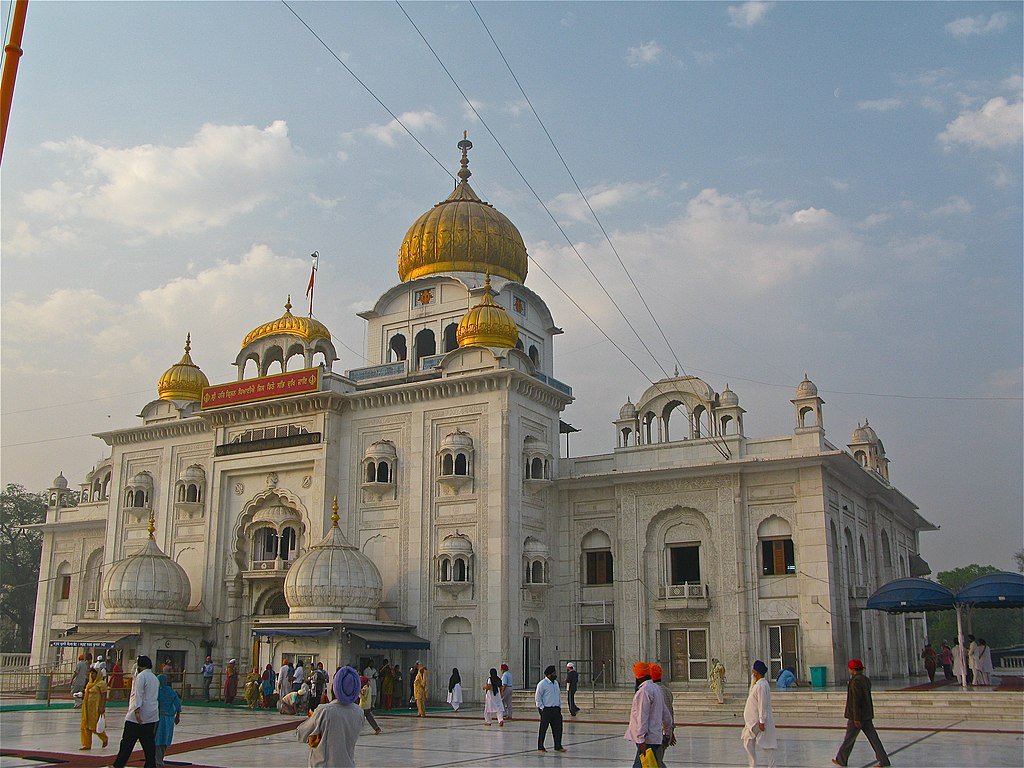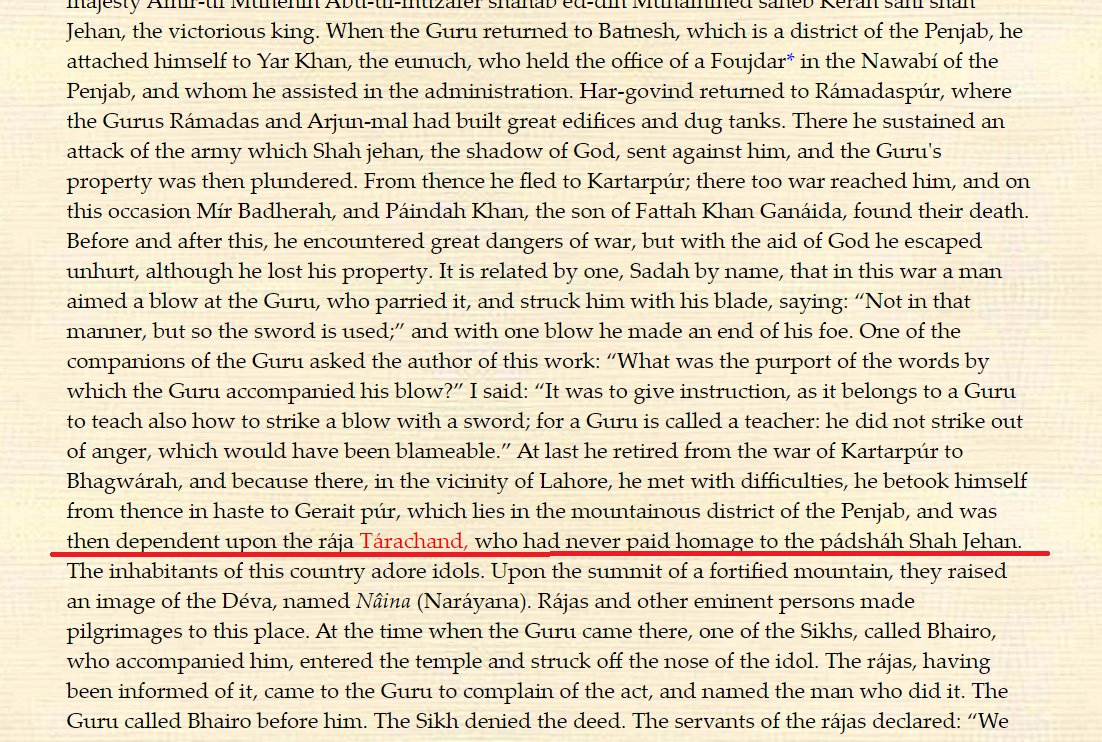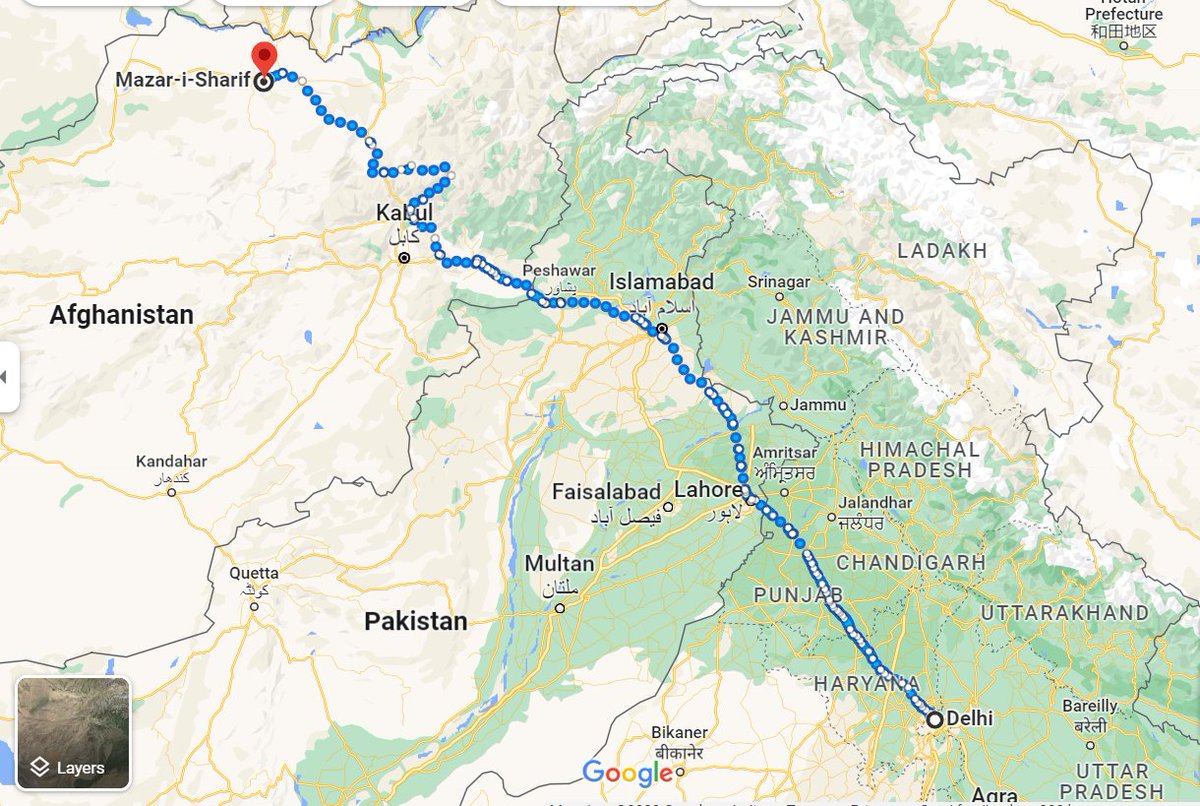
Gurudwara Bangla Sahib was originally Bangla (palace) of great Hindu King Raja Jai Singh.
When Aurangzeb summoned 6 year old Sikh Guru Har Krishan, Jai Singh protected the Guru & offered him residence here. He donated Bangla to Sikhs.
How Hindus protected & nurtured Sikhi🧵
When Aurangzeb summoned 6 year old Sikh Guru Har Krishan, Jai Singh protected the Guru & offered him residence here. He donated Bangla to Sikhs.
How Hindus protected & nurtured Sikhi🧵
https://twitter.com/iJasOberoi/status/1638242111165440000

Year: 1661.
Aurangzeb summoned Guru Har Krishan. He wanted to take away Guruship from the Guru bestow it onto Ram Rai.
The Great Rajput king Raja Jai Singh immediately realized that Guru's life was in danger. He personally went to Kiratpur to pay respects to the child Guru.
Aurangzeb summoned Guru Har Krishan. He wanted to take away Guruship from the Guru bestow it onto Ram Rai.
The Great Rajput king Raja Jai Singh immediately realized that Guru's life was in danger. He personally went to Kiratpur to pay respects to the child Guru.

Aurangzeb summoned Guru Har Krishan to Delhi. Violating the summon would only mean execution of the Guru.
But the Guru was reluctant to go to Delhi.
The Gurumata Krishan Kaur frankly said : " We will not go. We do not trust the Mughals. Nothing good has ever come from them".
But the Guru was reluctant to go to Delhi.
The Gurumata Krishan Kaur frankly said : " We will not go. We do not trust the Mughals. Nothing good has ever come from them".

Realizing the blockade and danger, Jai Singh Said:
"Mother, I take the responsibility of Guru's safety. He will be my guest.
I am a Rajput. This is a Rajput's word.
I wont allow a hair of the Guru to be touched. I will lay down my life for it. I will always be by his side "
"Mother, I take the responsibility of Guru's safety. He will be my guest.
I am a Rajput. This is a Rajput's word.
I wont allow a hair of the Guru to be touched. I will lay down my life for it. I will always be by his side "

Mata and the Guru were convinced.
The Guru accompanied Jai Singh to Delhi.
Jai Singh was true to his word. He personally protected the Guru & acted as his personal ambassador. He petitioned emperor on Guru's behalf.
Jai Singh ensured Aurangzeb didn't even lay his eyes on Guru
The Guru accompanied Jai Singh to Delhi.
Jai Singh was true to his word. He personally protected the Guru & acted as his personal ambassador. He petitioned emperor on Guru's behalf.
Jai Singh ensured Aurangzeb didn't even lay his eyes on Guru

While the Guru was at Delhi, Raja Jai Singh lodged the Guru in his personal Bungalow in outskirts of Delhi.
Guru was treated with great respect & given every comfort.
Many Sikhs came to visit Guru. After Guru passed away, palace was given to Sikhs and it later became Gurudwara
Guru was treated with great respect & given every comfort.
Many Sikhs came to visit Guru. After Guru passed away, palace was given to Sikhs and it later became Gurudwara

It was not only Rajputs.
Even many Brahmins laid down their lives to protect the Sikh Gurus and their families.
Take the case of Bhai Singha Purohit.
He rescued the daughter of Guru Hargobind, Bibi Viro, from the hands of Mughals.
He laid down his life in protecting the Guru
Even many Brahmins laid down their lives to protect the Sikh Gurus and their families.
Take the case of Bhai Singha Purohit.
He rescued the daughter of Guru Hargobind, Bibi Viro, from the hands of Mughals.
He laid down his life in protecting the Guru

When Guru Hargobind was attacked by Mughals, he was forced to leave Punjab plains for hills.
Raja Tarachand of Kahlur received and protected Guru Hargobind. He did not pay homage to Shah Jahan.
Raja Tarachand donated the land for the Guru. Here Guru Hargobind built Kiratpur.

Raja Tarachand of Kahlur received and protected Guru Hargobind. He did not pay homage to Shah Jahan.
Raja Tarachand donated the land for the Guru. Here Guru Hargobind built Kiratpur.


According to Sikh historians such as Surjit Singh & Hardeep Syan, Kiratpur Sahib was built on a land that was donated by Raja Tarachand of Kahlur.
Kiratpur was Raja's territory.
Raja Tarachand wasn't subordinate of Mughals. His land provided full security to Guru from Mughals
Kiratpur was Raja's territory.
Raja Tarachand wasn't subordinate of Mughals. His land provided full security to Guru from Mughals

November 1665:
Guru Tegh Bahadur was arrested by Aurangzeb.
Guru was about to be executed.
The Hindu prince Raja Ram Singh pleaded with the emperor to rescind his order.
Ram Singh eventually secured the release of the Guru.
The Hindu prince saved & protected the Sikh Guru
Guru Tegh Bahadur was arrested by Aurangzeb.
Guru was about to be executed.
The Hindu prince Raja Ram Singh pleaded with the emperor to rescind his order.
Ram Singh eventually secured the release of the Guru.
The Hindu prince saved & protected the Sikh Guru

This is the Raja of Kutlehar, a jagir in Himachal.
This sword was given to this family by Guru Gobind Singh.
Why?
In 1700, when Mughals attacked Anandpur Sahib, Guru came to Kutlehar.
The Raja of Kutlehar defied Mughal orders.
He did not attack/hand over Sikhs to Mughals
This sword was given to this family by Guru Gobind Singh.
Why?
In 1700, when Mughals attacked Anandpur Sahib, Guru came to Kutlehar.
The Raja of Kutlehar defied Mughal orders.
He did not attack/hand over Sikhs to Mughals

When Mughals attacked, Guru was forced to leave his seat & seek safety in Kutlehar.
Guru was in a very critical condition.
In this situation,the Raja defied Mughal orders and protected the Guru from Mughals.
For this indiscipline, Mughals punished Raja. His Jagir was reduced.
Guru was in a very critical condition.
In this situation,the Raja defied Mughal orders and protected the Guru from Mughals.
For this indiscipline, Mughals punished Raja. His Jagir was reduced.
1708-1725:
After Guru Gobind Singh ji passed away, the house of Guru's wife in Delhi was sacked.
They were forced to leave Delhi.
Sawai Jai Singh protected Guru's wife & family from Mughals & provided them a good house in Mathura and handsome allowance for their subsistence.
After Guru Gobind Singh ji passed away, the house of Guru's wife in Delhi was sacked.
They were forced to leave Delhi.
Sawai Jai Singh protected Guru's wife & family from Mughals & provided them a good house in Mathura and handsome allowance for their subsistence.

** Guru Gobind Singh's Dharmapatni Mata Sundari Ji,
Caveat: This thread has not been written to show any superiority or count favors. I have respect for the Gurus and that is not my intention. This thread has been written to counter false propaganda that Hindus had been enemies of Sikhs which cites modern myths like Gangu Brahman.
• • •
Missing some Tweet in this thread? You can try to
force a refresh





















